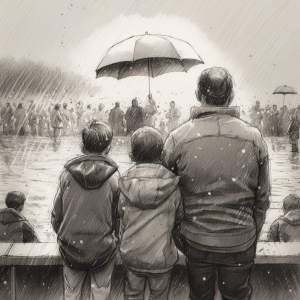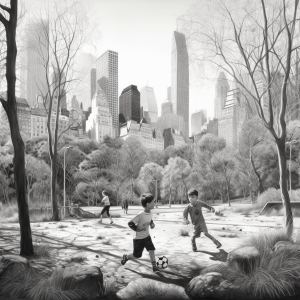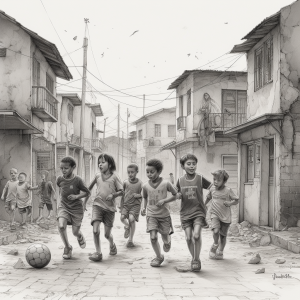A soccer team is like a game of chess. You have to plan it with patience, imagination and skill. The right players or should I say pieces should be utilised to their strengths to provide unity, harmony and effect. So how do you place players in their position?
All youngsters within a squad want to play and want to succeed. At a very young age the position is not as important as the amount of playing time. When selecting your players, certain physical characteristics play a part in your overall structure of the team. Height, weight, mobility, speed and skill act like a filter that will eventually weed out the players that are not suitable for certain positions.
Before I proceed I’d like to clarify something. Do not encourage boys to specialize too soon and too rigidly, sooner or later it will be evident that they are better suited in certain positions than in others. Back in the days when I dominated the fields (wink), the coach always built a team around the defence. The theory behind this is simple, clean sheets guarantees you a draw at least.
The game has evolved to the point where coaches are now constructing their midfield first by selecting the most versatile, hard working and technically gifted players to dominate the centre. Due to the pace of the modern game, the midfielders are in charge of spoiling the first wave of attack, disrupt the pattern of the opposition and organise their defences in front of the centre backs. Once your midfield acquires the ball, their role changes dramatically. The really effective midfielders form a second wave of attack behind the strikers and have the ability to score goals as well.
The pace, mobility and physical strength needed to play soccer these days has eliminated the old style midfielders that sat in the middle of the park distibuting balls. The chances of us seeing another player with the attributes of Ferenc Puskas are slim.
Lets focus on the defence now. Years ago it was the norm to put your strongest, biggest, tallest and toughest players in the defence. They had a simple instruction to guard their goal area with their lives and to get rid of the ball any which way. Today this no longer works. Kicking the ball aimlessly up-field has little to no value at all. The modern game has become a tactical battle based on valued possession.
These days a defender is judged on ball control and intercepting attacks with positioning and the ability to read the game rather than sheer strength and force. Players like Nesta, Puyol and Carvhalleo are defenders that are quite small in stature but big in presence. Their ability to read the game provides them with all the muscles they need.
Now we come to the most prized position of all, the striker. To help describe the importance of the strikers lets use a comparison. If the defence is the artillery of a team and its midfield the bridge building engineers, the strikers are the marines, commandos or the assassins whose primary function is to invade and conquer the enemy. Great strikers are usually born, not made. Don’t get me wrong, their game can be improved and developed. But the natural ability to snap up half chances in tight areas, while elbows are flashing and legs are lunging towards you in a suicidal fashion, must be genetically installed in you at birth.
Modern strikers must possess good speed, sharpness and split second decision making. The ability to change speed during a sprint will have the best managers fighting for your signature. Excellent ball handling qualities are also a prerequisite. Recieving the ball with your back to goal and having giant defenders kick at your heels is no easy task. As the name suggests, the strikers need to have the ability to strike and score goals.
Last but not least, the goalkeeper. Very short players will not make it even if they are brave and have flexibility. The ideal build for a goalkeeper is taller than the average, lean but not too muscular, long arms, large hands, strong legs and good eyes. Goalkeepers to some extent are also born not made. But great keepers are properly schooled and trained. They have to be taught that good positioning is half the battle. Shots can be saved through anticipation without the need of a spectacular save.
Next time you select your team, make sure to match your players strengths and physical attributes to the most suitable position. Get this right and you might end up coaching at Old Trafford one day.



Useful post, Thanks.